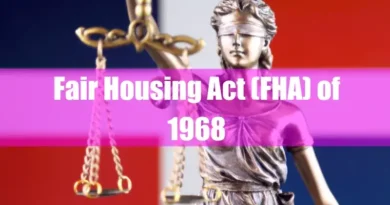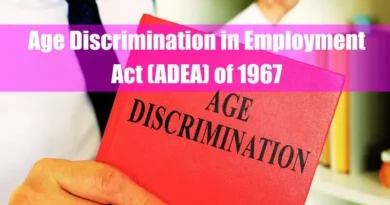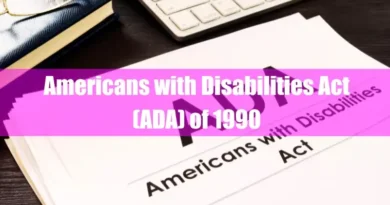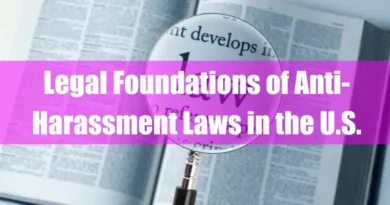The Protect from Exploitation Act (PROTECT) 2003
Takeaways
| Key Points |
|---|
| The PROTECT Act introduced key provisions aimed at strengthening child protection laws and enhancing law enforcement’s ability to combat child exploitation. |
| It imposed stricter penalties for child exploitation offenses, including longer prison sentences and higher fines, while also addressing child pornography by increasing penalties and creating new federal offenses, particularly targeting ‘virtual’ child pornography, though it stopped short of criminalizing purely fictional depictions. |
| The Act bolstered efforts to prevent child abduction and trafficking by establishing the National AMBER Alert Coordinator within the Department of Justice, providing federal funding to improve the AMBER Alert system, and enhancing coordination between state and local authorities for rapid child recovery. |
| Suzanne’s Law, a provision within the PROTECT Act, mandates that law enforcement report missing persons aged 18-21 to the NCIC database immediately, eliminating the previous 24-hour waiting period and ensuring urgent action in locating missing young adults. |
| Additionally, it granted law enforcement expanded prosecutorial tools such as broader jurisdiction over child exploitation cases, enhanced surveillance capabilities, and the ability to use undercover operations, while also allowing evidence from foreign jurisdictions to strengthen international cooperation against trafficking networks. |
| The Act introduced sentencing reforms, including mandatory minimum sentences—such as a 15-year minimum for producing child pornography—which ensured strict punishment for offenders, though these measures also sparked debates over the potential for excessively harsh sentencing in some cases. |
Introduction to the PROTECT Act of 2003
The PROTECT Act of 2003, formally known as the “Prosecutorial Remedies and Other Tools to End the Exploitation of Children Today Act,” was enacted to strengthen federal laws against child exploitation and abduction.
This legislation primarily aims to enhance the legal framework surrounding the protection of children from sexual exploitation, abuse, and trafficking. It introduced tougher penalties for offenders, improved law enforcement capabilities, and expanded measures to prevent child abductions.
The Act has played a significant role in safeguarding children’s rights and has set a precedent for subsequent laws targeting child exploitation.
Historical Context and Legislative Background
Events Leading Up to the Enactment of the PROTECT Act
Before the PROTECT Act, several high-profile child abduction cases raised public awareness and concern about child safety. One of the notable cases was the kidnapping and murder of 7-year-old Danielle van Dam in 2002.
Such incidents highlighted the need for stronger legislation to address child exploitation and abduction effectively. The public outcry and demand for better protective measures for children led to the development of this comprehensive law.
Key Figures and Stakeholders Involved in the Creation of the Act
Several key figures and stakeholders were instrumental in creating the PROTECT Act. This included legislators such as Congressman James Sensenbrenner, who introduced the bill in the House of Representatives, and Senator Orrin Hatch, who was a significant advocate for its passage in the Senate.
Advocacy groups, law enforcement agencies, and legal experts also contributed to shaping the provisions of the Act. Their combined efforts were crucial in ensuring the Act addressed the critical issues surrounding child exploitation and provided robust legal tools for protection and prosecution.
Key Provisions of the PROTECT Act
Detailed Description of the Main Components of the Act
The PROTECT Act encompasses several key components designed to protect children and enhance law enforcement’s ability to combat exploitation:
- Enhanced Penalties for Child Exploitation Offenses: The Act introduced stricter penalties for crimes involving child exploitation, including longer prison sentences and increased fines. This was intended to serve as a strong deterrent to potential offenders and ensure that those who commit such crimes face significant consequences.
- Provisions Regarding Child Pornography: One of the Act’s primary focuses was on child pornography offenses. It created new federal offenses and increased penalties for producing, distributing, and possessing child pornography. The PROTECT Act strengthened legal measures against child pornography, particularly targeting ‘virtual’ child pornography. Still, it did not fully criminalize attempts to access non-existent material (because the Act addressed specific types of content, including images and videos, but did not extend to non-existent materials “such as purely fictional depictions without real images” in the same explicit term). However, it made prosecuting virtual content cases easier, addressing previous legal challenges.
- Measures to Prevent Child Abduction and Trafficking: The PROTECT Act implemented various measures to prevent child abduction and trafficking. This included the creation of the National AMBER Alert Coordinator, tasked with overseeing and improving the AMBER Alert system, a critical tool in locating abducted children quickly and effectively.

AMBER Alert System Enhancement
Overview of How the PROTECT Act Strengthened the AMBER Alert System
The PROTECT Act significantly strengthened the AMBER Alert system by establishing a national coordinator within the Department of Justice. This coordinator’s role is to facilitate cooperation between state and local law enforcement, provide resources for alert dissemination, and ensure the system is used efficiently and effectively.
The Act also provided federal funding to support state and local AMBER Alert systems, making it easier for authorities to issue alerts across state lines and improving the chances of recovering abducted children swiftly.
Role of the National AMBER Alert Coordinator Established Under the Act
The National AMBER Alert Coordinator was created to standardize and improve the effectiveness of the AMBER Alert system nationwide. This role involves developing best practices for issuing alerts, coordinating between jurisdictions, and training law enforcement on using the system.
The coordinator also works closely with broadcasters and wireless service providers to ensure the timely dissemination of alerts to the public.

Suzanne’s Law: Expanding Protections for Missing Young Adults
Overview of Suzanne’s Law
Suzanne’s Law is a provision within the PROTECT Act of 2003 that extends protections for missing persons between the ages of 18 and 21. Named after Suzanne Lyall, a college student who disappeared in 1998, the law mandates that law enforcement agencies report missing individuals under the age of 21 to the National Crime Information Center (NCIC) database immediately, without the previous 24-hour waiting period.
Relation to the PROTECT Act
Before Suzanne’s Law, law enforcement response to missing persons aged 18-21 was often delayed due to the assumption that they had left voluntarily. By eliminating the waiting period for NCIC reporting, Suzanne’s Law ensures that young adults receive the same urgent attention as minors in cases of missing persons. This complements the broader objectives of the PROTECT Act by enhancing law enforcement’s ability to respond swiftly to abduction and trafficking cases.
Impact on Law Enforcement and Missing Persons Cases
Suzanne’s Law has significantly improved the ability of law enforcement agencies to locate missing young adults. By requiring immediate entry into the NCIC database, the law increases the likelihood of quick recoveries and prevents crucial investigation delays. This aligns with the PROTECT Act’s mission to strengthen legal tools for child safety and ensure better coordination in responding to abductions and disappearances.
Prosecutorial Remedies and Other Tools
Explanation of New Prosecutorial Tools Provided to Law Enforcement
The PROTECT Act provided law enforcement with several new prosecutorial tools to combat child exploitation more effectively. This included expanded authority to pursue cases involving child exploitation across state and international borders, enhanced surveillance capabilities, and the ability to use undercover operations to investigate and prosecute offenders.
The Act also allowed for the use of evidence from foreign jurisdictions in prosecuting child exploitation cases, which is crucial in the global fight against child trafficking and exploitation.
Impact of These Tools
The new tools provided by the PROTECT Act have significantly impacted law enforcement’s ability to prevent, investigate, and prosecute child exploitation crimes. Law enforcement agencies can target offenders more effectively by enhancing surveillance capabilities and allowing cross-border prosecutions.
The Act’s provisions have also made it easier to collaborate with international partners, which is crucial in tackling child trafficking networks that operate across multiple countries.

SAFE ID Act: Strengthening Identity Verification in Child Protection
Overview of the SAFE ID Act
The SAFE ID Act, introduced as part of broader child protection efforts, aims to prevent identity fraud and strengthen verification processes to combat crimes such as child exploitation and human trafficking. The Act enhances law enforcement’s ability to track offenders by improving identity authentication in federal databases and increasing penalties for fraudulent identification use in child-related offenses.
Relation to the PROTECT Act
The SAFE ID Act complements the PROTECT Act by reinforcing measures that help identify and apprehend criminals involved in child exploitation and abduction. While the PROTECT Act focuses on prosecutorial tools and stricter penalties, the SAFE ID Act ensures that identity fraud does not enable offenders to evade detection or commit crimes under false identities.
Impact on Law Enforcement and Child Safety
By requiring stronger identity verification measures, the SAFE ID Act helps law enforcement track offenders more efficiently and prevents criminals from using fraudulent identities to escape prosecution. This aligns with the broader goals of the PROTECT Act by closing legal loopholes and enhancing protections for vulnerable children.
Sentencing Reforms and Minimums
Changes to Sentencing Guidelines for Offenders
The PROTECT Act introduced several sentencing reforms, including mandatory minimum sentences for certain offenses related to child exploitation. These mandatory minimums are intended to ensure that offenders receive significant prison time, reflecting the severity of their crimes and serving as a potential deterrent to others. For example, the Act established a minimum sentence of 15 years for individuals convicted of producing child pornography, emphasizing the seriousness of such offenses.
Discussion on the Impact of These Sentencing Reforms
The sentencing reforms under the PROTECT Act have significantly influenced the justice system, particularly in the handling of child exploitation cases.
The Act aims to ensure that offenders convicted of severe crimes receive substantial punishment, reinforcing the message that such offenses will not be tolerated. However, these reforms have also sparked debate, with some critics arguing that mandatory minimums can lead to disproportionately harsh sentences, especially in cases with mitigating circumstances.

Impact and Implementation
Analysis of How the Act Has Been Implemented Across the United States
Since its enactment, the PROTECT Act has been implemented across the United States through coordinated efforts by federal, state, and local law enforcement agencies. Training programs, funding for AMBER Alert systems, and public awareness campaigns have been key components of its implementation.
The Act has also led to the establishment of task forces dedicated to combating child exploitation and has facilitated better communication and cooperation among various agencies.
Data and Statistics on the Effectiveness
The effectiveness of the AMBER Alert system has improved significantly under the PROTECT Act, with data showing increased recovery rates of abducted children. “According to the National Center for Missing & Exploited Children, over 1,000 children have been successfully recovered thanks to the AMBER Alert system.”
Additionally, the Act’s provisions have led to an increase in arrests and prosecutions for child exploitation crimes, indicating that the measures implemented under the Act are making a tangible difference in protecting children.
Controversies and Criticisms
Examination of Any Controversies or Criticisms Related to the PROTECT Act
Since its enactment, the PROTECT Act of 2003 has faced several controversies and criticisms. One primary concern is the law’s broad scope, which some argue could lead to overly harsh penalties and the potential for wrongful convictions. Critics have pointed out that the Act’s stringent measures, particularly the mandatory minimum sentences, do not always allow judicial discretion.
This lack of flexibility can result in sentences that do not adequately reflect the circumstances of the individual case.
Additionally, the provision of the Act that criminalizes attempts to access child pornography, even if the material does not exist, has sparked debate. Critics argue that this measure could punish individuals for crimes they did not commit, leading to questions about the fairness and proportionality of the Act’s application.
Debates Over the Balance Between Law Enforcement Authority and Civil Liberties
The PROTECT Act has also been criticized for potentially infringing on civil liberties. Some civil rights advocates argue that the expanded powers granted to law enforcement could lead to abuses of power. They contend that these measures, while intended to combat child exploitation, could be used to target individuals or invade their privacy without sufficient cause unjustly.
There is also a broader debate about the balance between protecting children from exploitation and maintaining fundamental civil liberties. While the Act has undeniably contributed to the protection of children, some argue that it does so at the expense of due process and the presumption of innocence.
This debate continues to shape discussions about the Act’s implementation and the need for potential reforms to safeguard individual rights.

Case Studies
Supreme Court Case Studies
In May 2008, the U.S. Supreme Court ruled on the case United States v. Williams, reversing the Eleventh Circuit’s ruling and upholding a portion of the PROTECT Act. However, the Supreme Court did not overturn its prior decision in Ashcroft v. Free Speech Coalition, which held that virtual child pornography not deemed obscene under the Miller standard remains protected speech.
In July 2024, R. Kelly petitioned the Supreme Court to overturn his criminal convictions, arguing that the crimes occurred in the 1990s and that punishing him for these acts retroactively violated the statute of limitations.
Convictions Under the PROTECT Act
The first person convicted under the PROTECT Act for virtual child pornography was Dwight Whorley of Virginia. Whorley used computers at the Virginia Employment Commission to download and print out Japanese anime-style cartoons depicting children in explicit sexual conduct with adults. In December 2008, the Fourth Circuit Court of Appeals upheld his conviction, aligning with the Supreme Court’s ruling in Ashcroft v. Free Speech Coalition, which protected virtual child pornography as free speech unless deemed obscene.
In another 2008 case, a prolific manga collector, Christopher Handley, pleaded guilty to charges under the PROTECT Act. Handley was the first individual charged solely for possessing obscene art, specifically manga graphic novels ordered from Japan. He accepted a plea deal, receiving a six-month sentence, five years of probation, and forfeiture of his collection. Despite not being convicted by a jury, the case highlighted the constitutional challenges posed by the PROTECT Act. District Court Judge James E. Gritzner ruled that certain provisions of the Act were overbroad and unconstitutional. However, Handley still faced an obscenity charge, and a later ruling in United States v. Dean challenged the overbreadth ruling by stating that the Handley case did not prove “substantial overbreadth.”
Amendments and Legislative Changes
Amendments or Legislative Changes to the PROTECT Act Since Its Enactment
Since its enactment in 2003, the PROTECT Act has been a foundation for subsequent legislation addressing evolving child protection and law enforcement challenges. One significant amendment was the Adam Walsh Child Protection and Safety Act of 2006, which further enhanced penalties for sex offenders and established a national sex offender registry.
This Act built upon the foundation laid by the PROTECT Act, expanding its reach and strengthening measures to prevent child exploitation.
In addition, the KIDS Act of 2008 introduced new requirements for registered sex offenders, including mandatory provision of online identifiers to help monitor their activities and prevent them from engaging in online child exploitation.
These legislative changes reflect ongoing efforts to adapt the legal framework to new technologies and emerging threats to child safety.
Impact of These Changes on the Ongoing Fight Against Child Exploitation
The amendments and legislative changes to the PROTECT Act have had a significant impact on the ongoing fight against child exploitation. By enhancing penalties and expanding monitoring requirements for sex offenders, these changes have made it more difficult for offenders to evade detection and continue exploiting children. The creation of a national sex offender registry has also improved public awareness and law enforcement’s ability to track and monitor offenders across state lines.
Moreover, the focus on online activities in the KIDS Act of 2008 has helped address the growing threat of internet-facilitated child exploitation. By requiring registered sex offenders to provide online identifiers, law enforcement can better monitor and prevent predatory behavior in online spaces.
These changes demonstrate the adaptability of the legal framework to protect children in an increasingly digital world.
Conclusion
The PROTECT Act of 2003 represents a landmark effort in the United States’ fight against child exploitation and abduction.
Through its comprehensive provisions, the Act has strengthened legal protections for children, enhanced law enforcement capabilities, and improved the effectiveness of the AMBER Alert system. While the Act has faced controversies and criticisms, particularly regarding civil liberties and sentencing guidelines, its overall impact on child protection has been substantial.
Subsequent amendments and legislative changes to the PROTECT Act reflect ongoing efforts to address new challenges and ensure the legal framework remains robust and effective.
As society continues to evolve and new threats to child safety emerge, the principles and protections established by the PROTECT Act will remain a crucial foundation for safeguarding children’s rights and well-being.
FAQ
What is the PROTECT Act of 2003?
The PROTECT Act of 2003, officially titled the “Prosecutorial Remedies and Other Tools to End the Exploitation of Children Today Act,” is a U.S. federal law enacted to prevent child abduction and sexual exploitation. It strengthens law enforcement’s ability to investigate and prosecute crimes against children.
How does the PROTECT Act enhance penalties for child exploitation?
The Act imposes mandatory life imprisonment for sex offenders convicted of offenses against minors if they have prior convictions. It also eliminates statutes of limitations for child abduction and abuse, ensuring offenders can be prosecuted regardless of when the crime occurred.
What changes did the PROTECT Act make to the AMBER Alert system?
The Act codified the National AMBER Alert Coordinator role within the Department of Justice, enhancing coordination among law enforcement agencies. It also provided federal funding to support state and local AMBER Alert programs, improving the system’s effectiveness in recovering abducted children.
Does the PROTECT Act address virtual child pornography?
Yes, the Act prohibits computer-generated images that are indistinguishable from real minors engaged in explicit conduct. It also bans drawings, sculptures, and other depictions of minors in obscene situations, even if no real children are involved.
How does the PROTECT Act impact international child exploitation?
Under Section 105, the Act authorizes fines and imprisonment of up to 30 years for U.S. citizens or residents who engage in illicit sexual conduct abroad with minors. This provision aims to combat child sex tourism and hold offenders accountable regardless of where the crime occurs.
What is Suzanne’s Law, and how is it related to the PROTECT Act?
Suzanne’s Law, incorporated into the PROTECT Act, eliminates waiting periods before law enforcement investigates reports of missing adults aged 18–21. Named after missing college student Suzanne Lyall, it ensures prompt action in such cases.
How does the PROTECT Act affect supervised release for sex offenders?
The Act allows for lifetime federal supervised release for sex offenders, removing previous limitations on the duration of supervision. This measure aims to monitor offenders more effectively after their release from prison.
Are there provisions for background checks in the PROTECT Act?
Yes, the Act establishes a program to obtain criminal history background checks for volunteer organizations, enhancing the screening process for individuals working with children and reducing the risk of exploitation.
Does the PROTECT Act authorize wiretapping in child abuse cases?
The Act authorizes wiretapping and monitoring of communications in cases related to child abuse or kidnapping, providing law enforcement with tools to gather evidence and prevent further harm to children.
How does the PROTECT Act address the distribution of child pornography?
The Act imposes a minimum sentence of 10 years for the distribution of child pornography, reflecting the severity of the offense and aiming to deter individuals from engaging in such activities.
What is the SAFE ID Act, and how is it connected to the PROTECT Act?
The Secure Authentication Feature and Enhanced Identification Defense Act (SAFE ID Act) is incorporated into the PROTECT Act. It aims to enhance identification security features to prevent the use of false identification in crimes against children.
How does the PROTECT Act impact sentencing for child exploitation offenses?
The Act introduces mandatory minimum sentences for various child exploitation offenses, ensuring that offenders receive substantial prison time and emphasizing the seriousness of these crimes.
Does the PROTECT Act address child trafficking?
While the Act primarily focuses on child exploitation and abduction, it also includes provisions that enhance law enforcement’s ability to combat child trafficking, such as increased penalties and improved investigative tools.
What role does the National AMBER Alert Coordinator play under the PROTECT Act?
The Coordinator is responsible for facilitating communication and cooperation among various agencies, developing best practices, and providing training to improve the effectiveness of the AMBER Alert system nationwide.
How does the PROTECT Act influence international cooperation in child exploitation cases?
The Act allows for the use of evidence from foreign jurisdictions in prosecuting child exploitation cases, enhancing international collaboration and enabling law enforcement to address offenses that cross borders more effectively.









